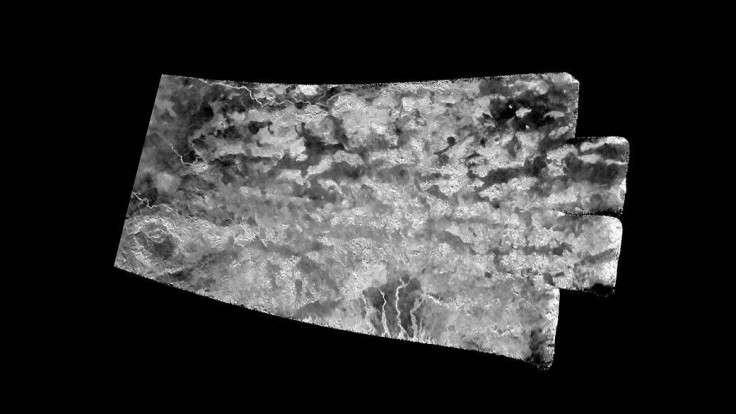NASA’s Cassini Captures Titan’s Dunes And Other Features In New Images

NASA’s Cassini spacecraft recently captured new radar images of Saturn's largest moon, Titan, revealing unforeseen features of a freezing alien landscape, NASA announced Wednesday.
Although Titan is surrounded by a dense, global haze, Cassini’s radar instrument is capable of penetrating that celestial mist to capture details on the moon’s surface. According to NASA, Cassini, which arrived in the Saturn system in mid-2004, obtained the images during a close flyby of Titan on July 25, when it came as close as 607 miles from the giant moon.
One of the images shows long, linear dunes that scientists say are comprised of grains derived from hydrocarbons that have settled out of Titan’s atmosphere. Those dunes, which encircle most of Titan's equator, are expected to help scientists learn more about winds, sands, and highs and lows found on the extraterrestrial landscape.
“Dunes are dynamic features. They're deflected by obstacles along the downwind path, often making beautiful, undulating patterns,” Jani Radebaugh, a Cassini radar team associate at Brigham Young University in Provo, Utah, said in a statement.
Another image shows an area dubbed “Xanadu annex,” which had not previously been captured in any image by the Cassini spacecraft. Earlier measurements had revealed that “Xanadu annex” might be quite similar to the large region on Titan named “Xanadu” — a region that was first imaged in 1994 by NASA's Hubble Space Telescope.
Hubble was able to view Xanadu's outline, but the annex area remained unnoticed until now, according to NASA.
“This ‘annex’ looks quite similar to Xanadu using our radar, but there seems to be something different about the surface there that masks this similarity when observing at other wavelengths, as with Hubble,” Mike Janssen, a Jet Propulsion Laboratory member of the radar team, said in the statement.
Unlike other regions of Titan where mountainous terrain appears in small, isolated patches, Xanadu covers a large area, with scientists proposing multiple theories about its formation.
Cassini, which had its 122nd encounter with Titan on July 25, will perform only four more Titan flybys, focusing primarily on the moon’s liquid-filled lakes and seas in its far north.
© Copyright IBTimes 2024. All rights reserved.






















